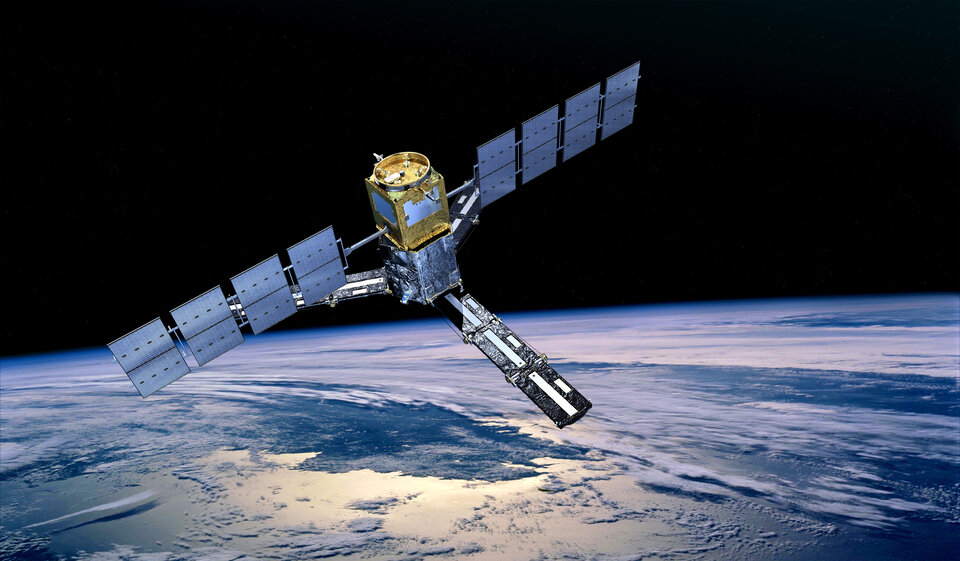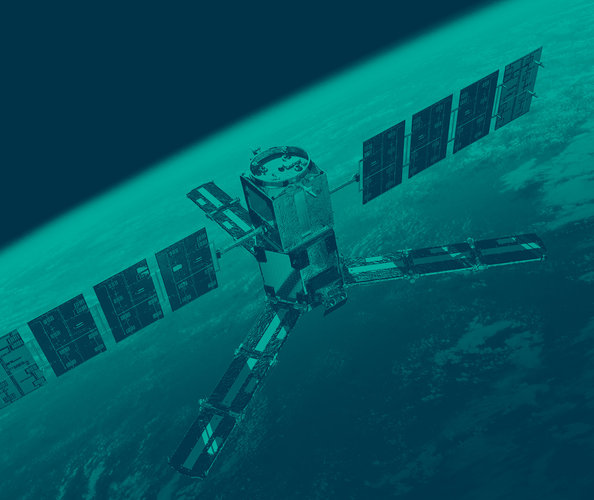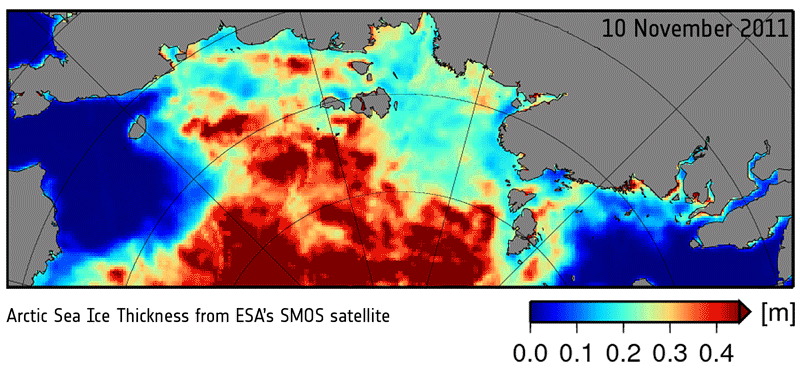ESA satellites looking deeper into sea ice
This year, satellites saw the extent of Arctic sea ice hit a record low since measurements began in the 1970s. ESA’s SMOS and CryoSat satellites are now taking a deeper look by measuring the volume of the sea-ice cover.
Measurements from ESA’s Soil Moisture and Ocean Salinity (SMOS) mission show that ice has thinned significantly in the seasonal ice zones, with extensive areas less than half a metre thick.
Sea ice has a large influence on the heat exchange between the ocean and the atmosphere. The heat flux can change depending on the sea-ice thickness and the air temperature. Sea ice is also affecting atmospheric circulation at mid-latitudes.
Although not originally designed for looking at ice, the SMOS satellite’s data are being evaluated to monitor Arctic sea ice.
The results reveal that radiation emitted by the ice allows SMOS to penetrate the surface, yielding ice-thickness measurements down to 50 cm – mainly the thinner and younger ice at the edge of the Arctic Ocean.

This allows improved evaluation of the volume of the young ice, which is the basis of old ice in subsequent years. Thick, multi-year ice indicates the health of the Arctic sea-ice cover.
“The amount of thin ice expected during the next freeze-up is about 12 million sq km, covering a larger part of the Arctic Ocean than ever before,” said Lars Kaleschke from the University of Hamburg’s Center for Earth System Research and Sustainability.
“The thick ice that has survived the summer, however, covers only 2.2 million sq km.”
The advantage of SMOS is it covers the entire Arctic Ocean on a daily basis, though the resolution is relatively low, at 35x35 sq km per pixel.
For a more detailed look at thick sea ice and ice shield thickness, ESA’s dedicated ice mission, CryoSat, uses a different technique and higher resolution along its ground track – about 300 m.
Earlier this year, the first seasonal variation map of Arctic sea-ice thickness from CryoSat was revealed. It was the first map of its kind generated using data from a radar altimeter and at such a high resolution.

With the freeze-up now in progress, CryoSat has resumed measurements of winter sea ice in the Arctic. Over the coming months, CryoSat data will reveal the effect of this summer’s record minimum on sea-ice thickness and volume.
The combination of the daily SMOS data on thin ice and the very detailed measurements from CryoSat provides a unique monitoring capability of the volume of polar ice.
It is important to keep a close watch on the Arctic because this inaccessible and very sensitive ecosystem is rapidly changing. The disappearance of ice has a major effect on the northern hemisphere.
ESA will continue to monitor the Arctic with the upcoming Sentinel series of Earth-observing satellites for Europe’s Global Monitoring for Environment and Security (GMES) programme.
The new sea ice thickness results are part of SMOSIce project funded by the ESA's Support To Science Element (STSE).















 Germany
Germany
 Austria
Austria
 Belgium
Belgium
 Denmark
Denmark
 Spain
Spain
 Estonia
Estonia
 Finland
Finland
 France
France
 Greece
Greece
 Hungary
Hungary
 Ireland
Ireland
 Italy
Italy
 Luxembourg
Luxembourg
 Norway
Norway
 The Netherlands
The Netherlands
 Poland
Poland
 Portugal
Portugal
 Czechia
Czechia
 Romania
Romania
 United Kingdom
United Kingdom
 Slovenia
Slovenia
 Sweden
Sweden
 Switzerland
Switzerland
































